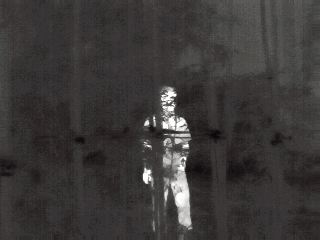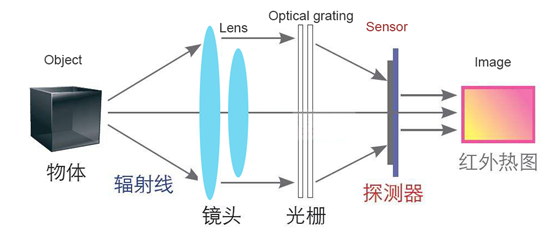Thermal imaging principles and applications
Objects in nature, in addition to the visible light images we are familiar with, also have an infrared thermal radiation image, but the human eye cannot see infrared thermal radiation because it emits infrared rays, which are invisible light.
The principle of thermal imaging is to use the optical system to gather the infrared rays radiated by the object onto the detector, detect the two bands and convert them into electrical signals, then the temperature of different areas on the surface of the object and its surrounding environment can be calculated, and the The image form shows its temperature distribution, so we see the image of the object. Due to the extremely poor penetration of infrared rays to most solid and liquid substances, infrared thermal imaging detection is mainly based on measuring the infrared radiation energy on the surface of objects. The infrared image can be obtained by using the detector to measure the infrared difference between different areas of the target itself and the background. Whether it is day or night, when using the night vision device for observation, people and other warm-blooded animals stand out from their background, which allows people to better observe the situation ahead in a completely dark night, Spot the target.

Thermal imaging renderings

Thermal Imaging Schematic
The characteristics of thermal radiation enable people to use it for non-contact temperature measurement and thermal state analysis of objects, thus providing an important detection method and diagnostic tool for industrial production, energy saving, environmental protection, target search, etc. By detecting infrared radiation emitted by objects, thermal imaging cameras produce a real-time image, thereby providing a thermal image of the scene. And transform the invisible radiation image into a clear image visible to the human eye. Thermal imagers are very sensitive and can detect temperature differences of less than 0.1°C.
When working, a thermal imager uses optics to focus infrared energy emitted by objects in the scene onto an infrared detector, and then the infrared data from each detector element is converted into a standard video format that can be viewed on a standard video monitor displayed on the screen, or recorded on videotape. Since a thermal imaging system detects heat rather than light, it can be used 24/7, and because it is a completely passive device with no optical radiation or radio frequency energy, it does not reveal the user's location.
Now, thermal imaging technology has been widely used in daily life. An important application is the diagnosis of diseases. When inflammation occurs in a certain part, the body temperature will rise. The traditional measurement of body temperature can determine whether there is inflammation, but it cannot determine the specific location of the inflammation. The thermal imager can intuitively give the temperature field distribution of the human body By comparing the heat map of the lesion with the normal heat map, the location of the disease can be diagnosed from the abnormal changes. Similar to diagnosing diseases, thermal imaging cameras can also be used to directly observe and inspect faults in electrical components of high-voltage power transmission and transformation, train axle boxes, circuit boards, etc., to avoid losses caused by faults. Thermal imaging cameras can also be used for geological surveys, geothermal exploration, forest vegetation distribution, atmospheric and ocean monitoring, fire detection and rescue. Thermal imaging cameras can help rescuers spot victims who are hidden by smoke and darkness so they can be rescued.
